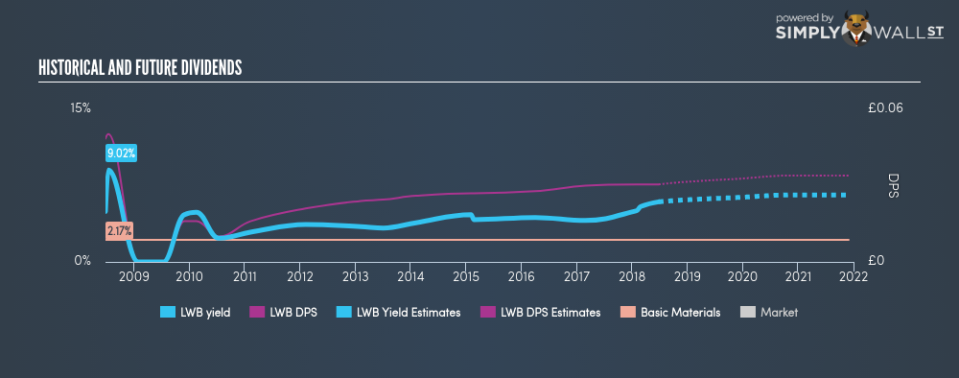Is Low & Bonar PLC (LON:LWB) A Great Dividend Stock?

Dividends play an important role in compounding returns in the long run and end up forming a sizeable part of investment returns. Low & Bonar PLC (LON:LWB) has returned to shareholders over the past 10 years, an average dividend yield of 4.00% annually. Does Low & Bonar tick all the boxes of a great dividend stock? Below, I’ll take you through my analysis. Check out our latest analysis for Low & Bonar
5 checks you should do on a dividend stock
Whenever I am looking at a potential dividend stock investment, I always check these five metrics:
Is it the top 25% annual dividend yield payer?
Does it consistently pay out dividends without missing a payment of significantly cutting payout?
Has the amount of dividend per share grown over the past?
Does earnings amply cover its dividend payments?
Will the company be able to keep paying dividend based on the future earnings growth?
How does Low & Bonar fare?
The current payout ratio for LWB is negative, meaning that the company is not yet profitable and is paying dividend by dipping into its retained earnings.
If dividend is a key criteria in your investment consideration, then you need to make sure the dividend stock you’re eyeing out is reliable in its payments. Not only have dividend payouts from Low & Bonar fallen over the past 10 years, it has also been highly volatile during this time, with drops of over 25% in some years. This means that dividend hunters should probably steer clear of the stock, at least for now until the track record improves.
In terms of its peers, Low & Bonar produces a yield of 5.91%, which is high for Basic Materials stocks.
Next Steps:
Taking all the above into account, Low & Bonar is a complicated pick for dividend investors given that there are a couple of positive things about it as well as negative. However, if you are not strictly just a dividend investor, the stock could still offer some interesting investment opportunities. Given that this is purely a dividend analysis, I recommend taking sufficient time to understand its core business and determine whether the company and its investment properties suit your overall goals. Below, I’ve compiled three important factors you should further examine:
Future Outlook: What are well-informed industry analysts predicting for LWB’s future growth? Take a look at our free research report of analyst consensus for LWB’s outlook.
Valuation: What is LWB worth today? Even if the stock is a cash cow, it’s not worth an infinite price. The intrinsic value infographic in our free research report helps visualize whether LWB is currently mispriced by the market.
Dividend Rockstars: Are there better dividend payers with stronger fundamentals out there? Check out our free list of these great stocks here.
To help readers see pass the short term volatility of the financial market, we aim to bring you a long-term focused research analysis purely driven by fundamental data. Note that our analysis does not factor in the latest price sensitive company announcements.
The author is an independent contributor and at the time of publication had no position in the stocks mentioned.

 Yahoo Finance
Yahoo Finance 
